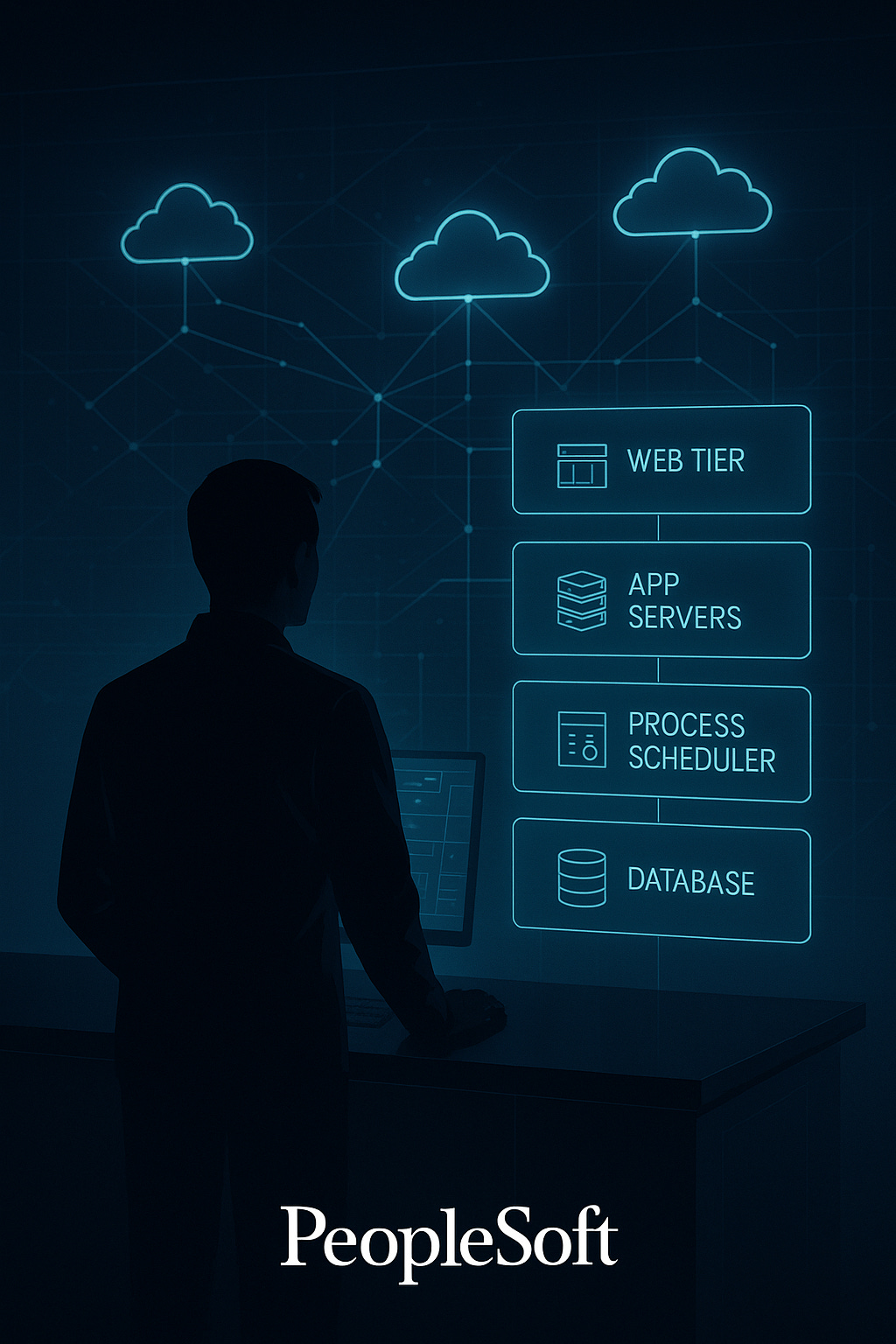The PeopleSoft Platform Cloud Engineer
A New Role Is Taking Shape
PeopleSoft occupies a unique position in the enterprise world. On the one hand, it’s a “legacy system” in the minds of many CIOs and consultants. On the other hand, it’s one of the most adaptable and long-lived ERP platforms ever built. The truth is, PeopleSoft is only as modern as the team running it. And when you move PeopleSoft into the cloud, GCP, AWS, or OCI, something important happens: the PeopleSoft admin role starts to evolve.
The traditional admin role evolved in data centers. It involved managing environments manually, editing configuration files directly on servers, restarting domains when issues arose, and deploying updates one environment at a time. That approach worked when infrastructure changed slowly and hardware stayed in racks you could walk over and touch.
Cloud changes the expectations. Scale becomes normal. Automation becomes mandatory. Observability and CI/CD pipelines become part of the day-to-day work. And “we’ll get to it later” no longer fits when infrastructure can be rebuilt from code in minutes. Running PeopleSoft in a hyperscaler means treating it like a platform, not an isolated application.
This shift creates a new role: The PeopleSoft Platform Cloud Engineer.
This person still understands PeopleTools, app servers, process schedulers, and web logic. However, they now also understand Terraform modules, VPC routing, identity and secrets management, container registries, Git-based change control, and integrated monitoring dashboards. They can explain how a change in a PS_HOME layer affects autoscaling. They can tune PIA, but they can also optimize GCP load balancer behavior or integrate OpenTelemetry traces.
The PeopleSoft Platform Cloud Engineer becomes the connective tissue between ERP operations and cloud engineering. They don’t just “keep the system running.” They design how the system runs.
This is where PeopleSoft gets exciting again. Not because the software changed, but because the people running it are leveling up.
If you’re in the PeopleSoft space today, this is your moment. The organizations leaning into this shift will run faster, simpler, and smarter.
And the admins who make the jump? They’re writing the next chapter of PeopleSoft.



